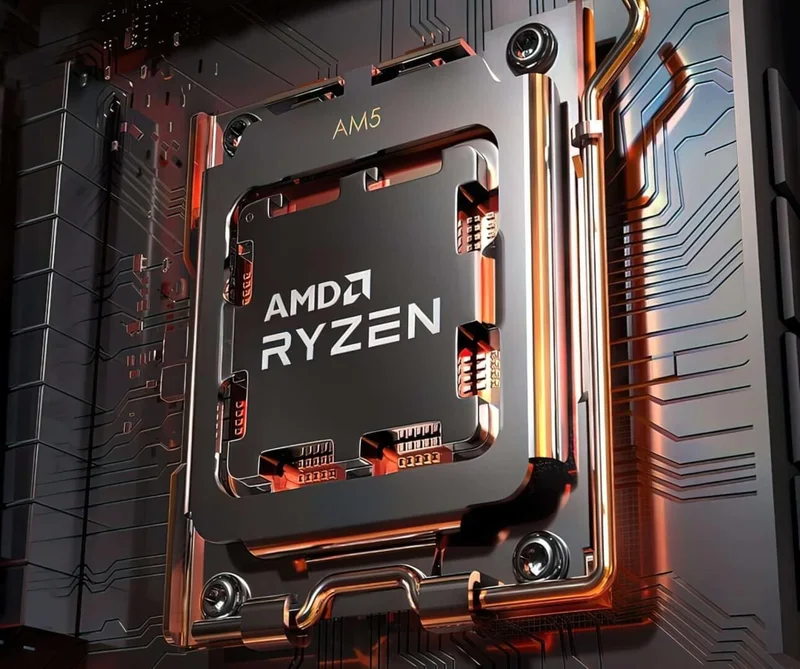The Great Chip Talent Migration
The semiconductor industry is a cutthroat arena, and the latest personnel shuffle is a stark reminder. Saurabh Kulkarni, VP of Data Center AI Product Management at Intel, is jumping ship to AMD. It’s a move that speaks volumes, especially as AMD gains ground against both Intel and Nvidia in the AI infrastructure race. Let’s break down what this means beyond the typical corporate press releases.
AMD's Momentum: More Than Just Hype?
AMD's recent successes, particularly landing OpenAI as a major customer, aren't just lucky breaks. Lisa Su's confidence in projecting "tens of billions in annual revenue in 2027 from its Instinct GPU business" isn't pulled from thin air. It's rooted in a data center AI strategy that seems to be resonating with key players. Intel, on the other hand, has struggled to meet its own modest expectations for its Gaudi chips – a mere $500 million last year. This discrepancy (a factor of at least 20x by 2027 if Su's projections hold) points to a fundamental difference in market perception and execution.
Intel’s response? A retooling of its data center AI strategy under new CEO Lip-Bu Tan. Tan's focus on becoming an "engineering-focused company" involves bringing in outside talent, including former Apple chip designers. But is this enough to reverse the tide? Kulkarni's departure suggests that some insiders are less than convinced. He oversaw AI systems and GPU product management under Sachin Katti, appointed to lead Intel’s AI strategy just last April. It begs the question: why leave a leadership role at a company undergoing a supposed renaissance? Was Kulkarni seeing something the rest of us aren't? Did he simply like the AMD stock options better? Exclusive: Intel Is Losing A Data Center AI Executive To AMD
The China Factor: A Looming Wildcard
While the battle between AMD, Intel, and Nvidia plays out, a larger geopolitical force is at play: China's increasing push for AI chip self-sufficiency. New guidance from the Chinese government mandates that state-funded data center projects exclusively use domestically manufactured AI chips. This directive, according to Reuters, even requires the removal of foreign-made chips from projects less than 30% complete.
This is not merely a preference for local vendors; it’s a strategic move to eliminate reliance on foreign technology. And it hits Nvidia, Intel, and AMD directly. While Trump suggested Washington would "let them deal with Nvidia but not in terms of the most advanced chips," the Chinese government seems to be saying, "we don't want Nvidia, Intel, AMD." China makes it clear; we do not want Nvidia, Intel, AMD; and Donald Trump cannot help

The implications are sweeping. AI data center projects in China have attracted over $100 billion in state funding since 2021. If this directive applies nationwide, it could effectively shut Nvidia (and to a lesser extent, AMD and Intel) out of one of its most lucrative markets. Jensen Huang's pleas to Washington to relax export restrictions are understandable, but they may be falling on deaf ears – both in Washington and Beijing.
It's not just about market access; it's about technological sovereignty. China has already banned Micron's products in critical infrastructure and is showcasing data centers powered entirely by homegrown AI chips. This isn't just protectionism; it's a long-term strategy to become a global leader in AI, independent of Western technology.
The move also gives domestic players like Huawei a significant advantage. While details on the performance and scalability of these domestic chips are scarce, the political backing is undeniable. And this is the part of the report that I find genuinely puzzling: How can Nvidia, AMD, and Intel compete against a competitor with the full weight of the Chinese state behind it?
The Talent War: A Symptom of a Deeper Problem?
Kulkarni's move, along with other technical leaders like Ronak Singhal and Rob Bruckner leaving Intel, highlights a potential brain drain. Tan's efforts to attract new talent are commendable, but retaining existing expertise is equally crucial. The departure of key personnel suggests that Intel may be facing deeper cultural or strategic challenges that aren't easily solved by hiring external executives.
It's a bit like trying to fix a leaky dam by throwing more engineers at it, instead of addressing the underlying structural flaws. Are Intel's internal processes too bureaucratic? Is its product roadmap too fragmented? Or is it simply that AMD's vision for the future of data center AI is more compelling?
The Writing's On the Silicon
The data is clear: AMD is gaining momentum, Intel is scrambling to catch up, and China is redrawing the map of the AI chip market. Kulkarni's departure isn't just a personnel change; it's a symptom of a larger shift in the balance of power. The question now is whether Intel can adapt quickly enough to remain a major player in this rapidly evolving landscape.

